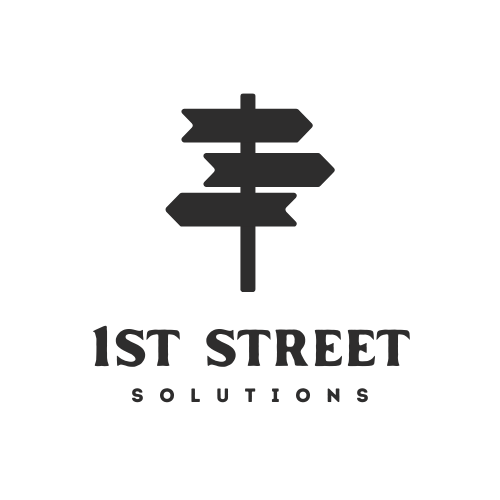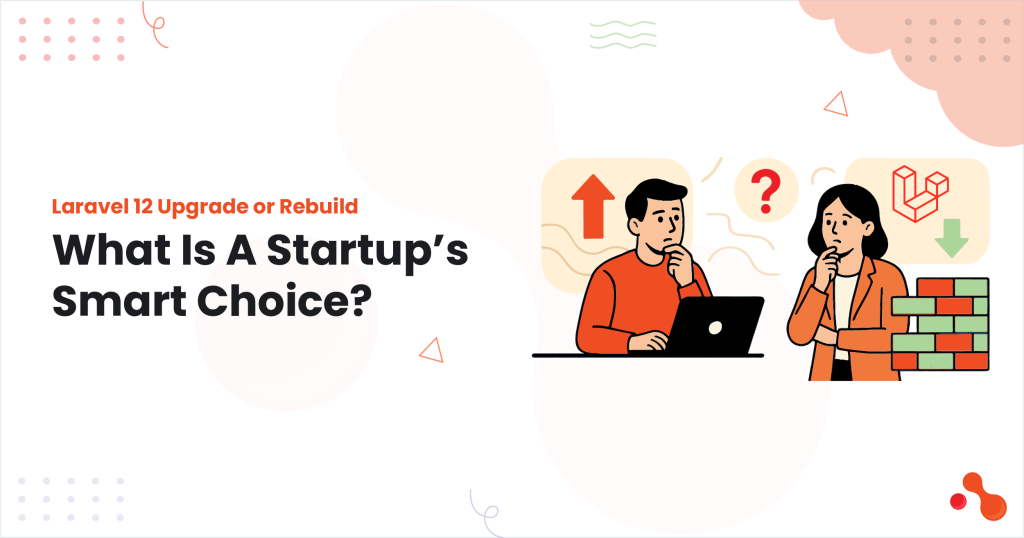Introduction
The decision to proceed with a Laravel 12 upgrade has become critical for many startups in 2025. As newer features improve security, performance, and maintainability, early-stage companies are reevaluating their existing codebases.
Most of these projects were built quickly using older Laravel versions, often under tight deadlines or by distributed teams. What was once a functional MVP may now be a blocker to growth.
According to the Laravel MVP guide, Laravel 12 introduces structural improvements that directly support scalable product development. But these Laravel 12 benefits only deliver full value when the codebase is stable and maintainable. For startups stuck with legacy architecture or fragmented logic, applying upgrades can introduce risks and unexpected rework.
Should a startup rebuild the application from scratch or invest in a structured Laravel 12 upgrade guide? Factors such as current technical debt, team capacity, user growth plans, and Laravel development cost all play a role in making the right choice.
Assessing Your Current Codebase and MVP Health
The first step in choosing between a rebuild and a Laravel 12 upgrade is to evaluate the current condition of your MVP. Most startup applications evolve fast, often built by small teams under tight deadlines. Over time, these early decisions can introduce code-level bottlenecks that block future scalability.
✅ 1. Identify the Current Laravel Version
If your application is still running Laravel 5.x, 6.x, or 7.x, you’re already outside of long-term support. Laravel 8 reached the end of bug fixes in January 2023, while Laravel 7 and below no longer receive official patches. You can confirm Laravel’s release lifecycle at the official Laravel release support policy.
A gap between current and target versions adds technical risk and migration complexity. Jumping from Laravel 6 or 7 to 12 may involve multi-phase upgrades, significantly increasing the Laravel development cost and migration time.
✅ 2. Evaluate Code Quality and Technical Debt
Audit your codebase for symptoms of poor structure. Common indicators include:
- Logic written directly inside the controllers
- No use of Service Providers or Repositories
- Large untested classes and unhandled exceptions
- Outdated packages or abandoned dependencies
- No use of modern Laravel features like queues, events, or policies
These patterns suggest the MVP was designed for speed, not stability. Refactoring such a codebase before applying a Laravel 12 upgrade guide could cost more than rebuilding.
✅ 3. Check for Framework Alignment
Does your codebase follow Laravel’s recommended directory structure and naming conventions? If the project bypasses built-in features like middleware, jobs, and Eloquent relationships in favor of shortcuts, you may not get the full Laravel 12 benefits post-upgrade.
Many early-stage products sacrifice clean architecture to ship quickly. But when it’s time to scale, those shortcuts turn into blockers. Laravel 12 for startups brings long-term advantages, but only when the application is already well-structured or has a clean migration path.
When Does It Make Sense to Upgrade to Laravel 12?
Not every startup needs a full rebuild. In many situations, a carefully planned Laravel 12 upgrade can improve performance, maintainability, and developer efficiency. If your current codebase follows modern standards and supports clean deployment practices, upgrading may be a better long-term investment.
✅ 1. You Already Have Structured, Maintainable Code
Applications that follow Laravel’s standard practices, such as route grouping, service providers, jobs, and policies, typically experience smoother upgrades.
Well-organized code makes it easier to adopt strict typing, enhanced performance features, and improved syntax available in Laravel 12. Teams benefit from faster development cycles, stronger code validation, and fewer refactoring issues.
✅ 2. Your Current Version Is Laravel 8 to 10
If your project is running on Laravel 8, 9, or 10, the upgrade path is more direct. These versions are close to Laravel 12 in structure and syntax, which allows for step-by-step transitions using the official upgrade process. This reduces the overall Laravel development cost and minimizes the risk of breaking core functionality.
✅ 3. Your App Works, but Slows Down Development
Many startups have functional apps that lack efficiency under the hood. When tasks take longer to implement, onboarding becomes difficult, or technical debt slows down progress, a Laravel 12 upgrade improves overall productivity. Features like improved exception handling, typed closures, and better container resolution allow developers to move faster with fewer errors.
When is it Better to rebuild in Laravel 12?
In some cases, attempting a Laravel 12 upgrade will cost more in time, effort, and complexity than starting fresh. When the existing application is unstable, outdated, or poorly structured, a rebuild ensures a clean slate that supports long-term growth and adaptability.
Below are clear indicators that rebuilding is the more practical choice:
✅ 1. Your MVP Is Bloated, Buggy, or Held Together by Workarounds
When an MVP is built quickly and lacks structure, the code may be too fragile to upgrade. Frequent bugs, multiple untracked dependencies, and patch-style fixes indicate a system that is difficult to maintain or scale. A Laravel 12 upgrade applied on top of a messy foundation often leads to regression bugs and technical instability.
✅ 2. Your Roadmap Requires Major Architecture Changes
If your next product phase includes switching to microservices, implementing a multi-tenant architecture, or building APIs for third-party integration, a full rebuild may be more efficient. Trying to retrofit these changes into a legacy structure can increase Laravel development costs and delay releases.
✅ 3. You’re Changing Business Direction and Need Technical Alignment
The original codebase may no longer serve your new business logic if your product direction has changed significantly. Whether you’re switching platforms, changing user flows, or targeting new markets, rebuilding in Laravel 12 allows you to adopt relevant features without legacy constraints.
Laravel 12 Features That Make Rebuilding Worth It
Rebuilding on Laravel 12 allows you to take full advantage of new features designed for speed, security, and modern system architecture. These Laravel 12 benefits help reduce technical debt and increase delivery efficiency for startups.
Key Features at a Glance:
UUIDv7 Support
- Enables better database indexing and time-based record sorting.
- Ideal for startups that need clean migration paths and a scalable data structure in a Laravel 12 upgrade.
Enhanced Artisan CLI
- Simplifies command usage and accelerates developer onboarding.
- Boosts team productivity, especially when working on fresh builds using Laravel 12 for startups.
Sanctum for API Security
- Provides token-based authentication for SPAs and mobile apps.
- Reduces setup time and enforces modern security in every Laravel development cost plan.
Starter Kits (Breeze/Jetstream)
- Offers ready-to-use UI scaffolding with Tailwind CSS and Livewire or Inertia.
- Speeds up UI development in early-stage rebuilds using the Laravel 12 upgrade guide.
Laravel Octane
- Optimizes Laravel to run with Swoole or RoadRunner for high-performance output.
- Essential for startups planning to scale under high traffic with efficient Laravel 12 benefits.
CI/CD Integration Ready
- Streamlines deployment through GitHub Actions, Envoyer, and pipeline tools.
- Improves release cycles and reduces manual errors during Laravel 12 upgrade execution.
Cost Comparison: Upgrade vs Rebuild
Understanding the trade-offs between upgrading and rebuilding helps startups make better investment decisions. This table compares the real-world implications of each approach in terms of cost, time, flexibility, and long-term value.
Laravel 12 Upgrade vs Rebuild Comparison
| Factor | Laravel 12 Upgrade | Rebuild with Laravel 12 |
|---|---|---|
| Short-Term Cost | Lower due to smaller scope and reuse of existing code | Higher due to full rewrite and planning |
| Timeline | 2 to 4 weeks, depending on current code quality | 4 to 8 weeks for complete build and testing |
| Flexibility | Limited by legacy architecture and package constraints | Full flexibility to implement new design and tech choices |
| Long-Term ROI | Good if the codebase is structured and up-to-date | Excellent if MVP is outdated, buggy, or misaligned with the roadmap |
| Laravel Development Cost | Predictable for stable Laravel 8–10 projects | Justified if the rebuild removes upgrade blockers and tech debt |
| Laravel 12 for Startups | Suitable for minor refactoring and scaling of existing features | Ideal for pivoting, rebranding, or scaling from scratch |
Use Case Example: Upgrade vs Rebuild Decision Tree
To help CTOs and founders make a practical decision, here are real-world startup scenarios where the choice between a Laravel 12 upgrade and a full rebuild becomes clear. Each case explains the situation, challenges, and the recommended direction based on stability, cost, and scalability.
🔹 Case 1: Legacy Laravel 5.6 App with No Testing or Structure
A fintech startup built its MVP three years ago on Laravel 5.6. It has no automated tests, uses outdated packages, and relies on inline queries across controllers. Developers spend more time fixing regressions than shipping features.
Recommended Path: Rebuild
Upgrading from such an old version introduces too many conflicts. A fresh Laravel 12 build improves maintainability, supports long-term scaling, and reduces hidden Laravel development costs caused by patch fixes.
🔹 Case 2: Laravel 9 App with Clean Architecture and Tests
An early-stage SaaS product runs on Laravel 9, with defined services, queues, middleware, and unit tests in place. Performance is stable, and the team just needs better typing and IDE support.
Recommended Path: Laravel 12 upgrade
As the app is already structured well, the upgrade enables access to Laravel 12 benefits like typed properties, improved error reporting, and compatibility with new libraries, without high risk or rework.
🔹 Case 3: MVP Built in a Rush Using Laravel 6 with Workarounds
A startup in the eCommerce space built a marketplace using Laravel 6 with shortcuts everywhere, no queues, mixed Blade and logic, and heavy use of deprecated packages. Business logic has changed, and a new mobile app is in development.
Recommended Path: Rebuild
The current structure limits extensibility and breaks best practices. Rebuilding in Laravel 12 offers cleaner separation, modern APIs, and full alignment with the updated product roadmap.
🔹 Case 4: MVP Is Stable but Developer Velocity Is Low
A bootstrapped startup is using Laravel 8. The code works, but onboarding takes too long, and developer productivity is declining. The app lacks typing, uses custom helper files, and has inconsistent naming conventions.
Recommended Path: Laravel 12 upgrade
If the core works, but productivity is the main issue, upgrading improves structure without the cost of rebuilding. Teams benefit from better IDE support and consistent syntax from Laravel 12 features.
These use cases show that the decision is not just technical. It depends on how your app was built, how it’s maintained, and what your next phase requires. Making the right call ensures the Laravel 12 upgrade or rebuild aligns with your growth path.
Bottomline
Laravel 12 offers clear structural improvements, performance gains, and better development tools. When used correctly, it supports fast feature delivery and safer deployments. If your current application is maintainable and already runs on Laravel 8 to 10, a Laravel 12 upgrade gives you speed without disruption.
But if your MVP struggles with legacy logic, untested components, or poor architecture, rebuilding will cost more today but save time, money, and developer frustration in the future. Many early-stage startups find that a clean rebuild aligns better with new product goals, market shifts, or investor expectations.
Every startup must assess its Laravel development cost, team capacity, and codebase quality. Choosing the right path ensures you are not just building features, but building a product that lasts. For 2025, the most successful startups will be those that treat their codebase as an investment, and Laravel 12 for startups is built exactly for that!









